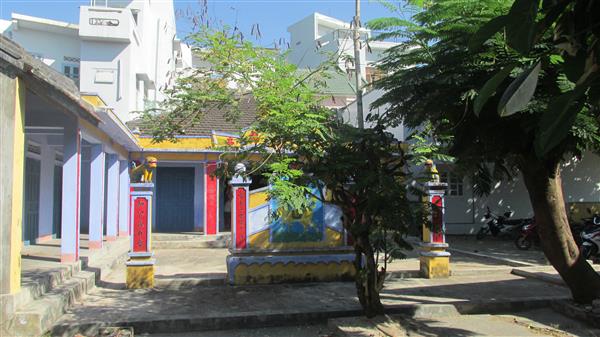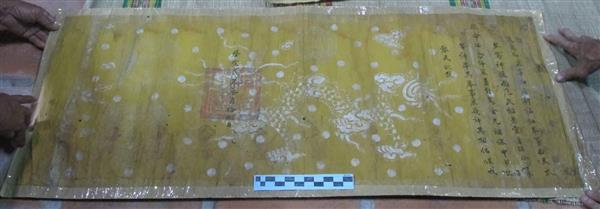Description
Tan Phuoc communal house is located in Tan Phuoc village, Van Phuoc commune, Van Ninh district, Khanh Hoa province, about 13km from Van Gia town to the North (formerly belonging to Tan An, Tot Ha commune, Quang Phuoc district, Binh Hoa government)[1] ].
About 300 years ago, people in the provinces of Quang Nam, Quang Ngai, Binh Dinh, Phu Yen... came here to reclaim land, establish villages, and establish hamlets. After a while, life gradually calmed down, the population became more and more crowded, Mr. Tran Dien and his assistant Vo Tran[2] gathered the people together to build a communal house to have a place to worship the gods. organization of meetings, cultural activities of the community. At first, the communal house made simple cottages and earthen walls, later the life was well-off, the people's religious needs developed, contributed and contributed to the renovation of the communal house to the size it is today.
Since its construction, Tan Phuoc communal house has undergone many renovations and the most recent time was in 1993, with the contribution of the people of Tan Phuoc communal house, it repaired the following items and works, including: ordination, sacrifice, main hall. West house.
The relic is located on a flat land with beautiful terrain, airy space in the center of Tu Bong town, with an area of 400m2, the communal house faces Southeast.

Tan Phuoc communal house campus
The overall layout of the work items is spread across the width, including: Nghi Mon, Phong Nha, front hall, main hall, Western house.
In addition to the unique beauty of architectural art, Tan Phuoc communal house also preserves many relics and antiques of great historical and cultural value: Han Nom documents, long communal houses, parasols, gongs, drums, etc. mules, rituals, rituals, sacrifices, music, costumes, etc. In particular, the six ordinations conferred by the Kings of the Nguyen Dynasty include:
- Ordained Thieu Tri in the 3rd year (1843) to the Iron God goddess;
- Ordaining Tu Duc in the 33rd year (1880) to the goddess Iron God;
- Ordaining Khai Dinh in the second year (1917) to the god Bach Ma Thai Giam;
- Ordaining Khai Dinh in the 9th year (1924) granted the standard ordination for worship.




Ordinances are preserved at Tan Phuoc communal house
The two colors are not intact in terms of content, many of the Chinese characters in the identity are damaged and cannot be read.
Every year, the traditional festival is held on the 16th and 17th of the second lunar month with the principle of "When drinking water, remember the source", paying respects to the gods and praying for peace, prosperity and good weather.
Tan Phuoc communal house was built around the beginning of the nineteenth century, due to the needs of the resident community when they came to the newly reclaimed land and established a hamlet. The relic exists along with the history of formation and development of Khanh Hoa land in general and Van Ninh people in particular. The communal house is a historical evidence that marks a period of land exploration by the ancestors, in which converges almost all the values that his father and grandfather created and handed down. The most prominent feature of the communal house is the wooden frame bearing structure system with sophisticated decorative patterns, bearing the local traditional style that is still preserved here.
Because of the above typical values, Tan Phuoc communal house was ranked as a historical-cultural relic of the People's Committee of Khanh Hoa province issued by Decision No. 2985/QD-CT.UBND dated November 7, 2014 conscious.
[1] Translated by Nguyen Dinh Dau, (1997), Research on the Nguyen Khanh Hoa dynasty, Ho Chi Minh City Publishing House.
[2] Tran Dien and Vo Tran are the predecessors of the village.